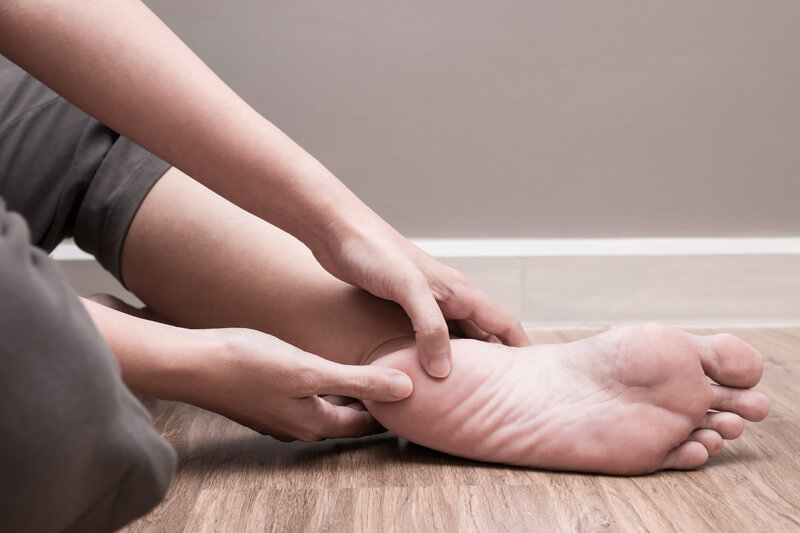
Heel spurs are calcium deposits causing bony protrusions on the underside of the heel bone. Heel spurs are not always detected as soon as they appear because they do not cause pain themselves but can cause heel pain.
Sometimes they may remain undetected until a foot x-ray is taken for some other condition, like plantar fasciitis (painful inflammation of the fibrous band of connective tissue that runs along the bottom of the foot). When detected on x-ray, some heel spurs can extend forward as much as a half-inch.
Causes of Heel Spurs
Heel spurs are usually caused by long-term muscle and ligament strain, stretching of the plantar fascia, and repeated tears of the membrane that covers the heel bone.
There are also risk factors associated with heel spurs, including:
- Gait abnormalities that place stress on the heel bone, ligaments and nerves near the heel
- Running or jogging on hard surfaces
- Poorly fitted shoes, lacking arch support
- Badly worn shoes
- Obesity
Symptoms of Heel Spurs
Heel spurs don’t actually cause pain, but rather the soft-tissue injury associated with it does. In that regard, symptoms may include:
- Intermittent or chronic pain when walking, jogging, or running
- A pin-stick-like sensation at the bottom of the foot when standing up in the morning
- A dull ache in the heel through the day
- Sharp pain in the heel when standing after sitting for a while
Treatment for Heel Spurs
Conservative treatment options for heel spurs include:
- Regenerative medicine
- Taping or Strapping to Rest Stressed Muscles and Tendons
- Cortisone Injections
- Over-the-Counter Pain Medications (e.g., Ibuprofen, Tylenol)
- Better Shoe Purchases
- Stretching Exercises
- Physical Therapy
- Orthotic Devices or Shoe Inserts
Surgical interventional may be required if your condition doesn’t improve with conservative treatments after 9 or 12 months. Surgical options may include the release of the plantar fascia or the removal of a spur.
Recovery from Heel Spur Surgery
If you have heel spur surgery, post-surgical care includes rest, ice, compression, and foot elevation. Your doctor will let you know when you can place weight on the operated foot. After surgery, you may have to wear a splint, cast, surgical shoe, and/or use crutches or a cane.
Preventing Heel Spurs
Wearing well-fitting and appropriate shoes for each physical activity can help prevent heel spurs because you have better shoes for heel support with shock-absorbent soles.
Other tips for preventing heel spurs include:
- Warming Up and Stretching Before Each Exercise
- Pacing Yourself During Exercise
- Replacing Shoes After 6 Months (for continued arch and heel support)
- Losing Weight
Dr. Melissa Will Help Get You Back On Your Feet
Dr. Melissa Wawrzynek is a board-certified foot and ankle specialist and offers a broad range of advanced orthopedic, sports medicine, and regenerative treatments.
Our doctor and her team will consult with you regularly to ensure you return to health and receive the highest quality care.
If you’re ready to return to full speed as quickly, easily, and safely as possible, schedule an appointment today.

